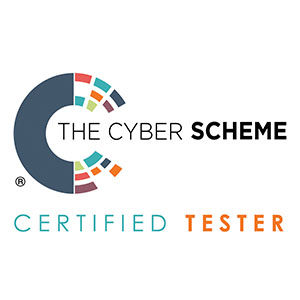
Blended Penetration Testing Helps You to Stay Ahead of The Curve
In today’s hyper connected threat landscape, penetration testing and navigating the digital highways feels like racing through challenging terrain. Each day brings news about several new cyber security breaches, serves to remind that there is little room for error with scores of data and billions of dollars at risk. It’s crucial for organisations to invest more money and time in securing their digital controls and highways if they are to navigate towards the future with confidence and agility.
In the digital, risk and compliance race, penetration testing isn’t just a precaution it’s a strategy for staying ahead of the curve.
What is Penetration Testing
Penetration testing or ‘pen testing’ for an organisation is like an annual MOT checkup for a car.
At Incursion Cyber Security, our ethical hackers, or ‘pen testers,’ play the role of malicious actors, diving under the cybersecurity hood to launch simulated attacks. Just as an MOT check uncovers potential issues with your car, penetration testing uncovers business-specific security gaps in controls, that attackers can exploit. These gaps could lead to stolen records, compromised credentials, intellectual property, personally identifiable information (PII) or other harmful business outcomes.
Penetration testing is proactive, it’s about staying one step ahead of the growing risks and threats. By identifying these gaps and suggesting mitigation strategies, it helps to protect vital business assets from future cybersecurity attacks.
Penetration testing can be approached in two ways, automated testing and manual testing. Which one might be the best suited for you? Let’s find out together!
Automated Penetration Testing, Speeding Along, Yet Lacking Precision

Much like a race car running on autopilot, automated penetration testing relies on programmed tools and scripts to navigate an organisation’s networks. These tools zoom through target applications and systems, swiftly detecting vulnerabilities and generating automated reports. Automated pen testing offers a quick and cost-effective solution. It allows organisations to schedule automated tests regularly for continuous monitoring, covering extensive networks and systems in minimal time.
Despite its acceleration, automated penetration testing faces hurdles. Across the digital highways, sophisticated threats are evolving at lightening speeds, outpacing the capabilities of the automated tools. While these tools leverage AI, machine learning (ML) and standardised scripted approaches, they rely on predefined testing procedures and signatures. However, there are sophisticated threats, zero-day exploits or social engineering tactics which may slip through the cracks of automated penetration testing and require human intuition for detection.
Though AI-driven standardisation is heralded across various sectors, in this arena, it falls short in creativity and adaptability. These tools struggle to grasp the subtleties of an organisation’s unique environment, often generating false positives or missing critical vulnerabilities. Just as a skilled driver’s intuition is indispensable on the racetrack, human insight remains irreplaceable in navigating the ever-changing landscape of cybersecurity threats.
The Importance of the Human Touch
While automated tools have their place and can efficiently identify known vulnerabilities, they struggle to match the nuanced expertise that human testers bring to the race track. Human pen testers not only pinpoint technical vulnerabilities but also scrutinise human-centric behaviours within an organisation’s operations and infrastructure.
Manual penetration testing delves deeper into potential weaknesses by considering factors like user behaviour, organisational culture, and system interconnections. This human touch in penetration testing adds a layer of creativity, insight, adaptability, and contextual understanding that automated tools alone cannot replicate, much like the intuitive nature of a seasoned F1 driver on the race track.
Log4j Zero-Day RCE Vulnerability – Automated Penetration Testing Falling Short
The importance of manual penetration testing was highlighted by the Log4j Zero-Day RCE Vulnerability (2021). This flaw could be exploited by attackers to execute arbitrary code remotely. Malicious attackers could exploit this vulnerability by injecting malicious code into Java applications that relied on Log4j. The automated testing tools deployed by many organisations overlooked this particular vulnerability despite its existence in the system since 2013.
After 8 years, Luca Carettoni, a cybersecurity researcher finally uncovered this during his routine security research and testing. He appraised Apache Software Foundation of the same, who promptly released a security advisory and patches to address the vulnerability.
If not for Luca Carettoni’s preemptive discovery, the Log4j zero-day vulnerability could have eventually led to considerable financial and reputational damage to organisations worldwide. According to estimates, the Log4j vulnerability affected over millions of applications and devices globally, including critical infrastructure, financial institutions, government agencies, and healthcare providers. Had this vulnerability been exploited, it would have been responsible for data breaches affecting both individuals and businesses across the world, with the estimated cost of recovery being up to $4.25 million.
The Log4j zero-day vulnerability incident highlights the critical role of proactive security research in safeguarding organisations against emerging cyber threats. It not only exposed the gaps left by automated penetration testing but also highlighted why human involvement is required for successful mitigation.
Manual Penetration Testing – Navigating The Cyber Security Circuit

Manual penetration testing, with human testers at the wheel, incorporates the technical and the human-centric approach. It identifies vulnerabilities and interprets the findings within the context of the organisations’ unique infrastructure, operations, processes, and industry needs.
They stay informed and up to date on evolving cybersecurity threats. This enables them to identify intricate and emerging threats that can often slip through the cracks of automated testing. Furthermore, they deliver detailed reports tailored to your organisation’s specific risks and challenges complete with practical recommendation for mitigation.
The Blended Approach The Best of Both Worlds
While there’s no denying the increasing traction AI and automated testing tools are gaining. That’s exactly what they need to be looked at as, tools! They are not a one-stop solution for your cybersecurity needs.
Let’s imagine your cybersecurity needs are like ensuring the safety of your vehicle. A vulnerability scan is like running a diagnostic check on your car’s engine. It might identify some issues like low oil levels or a loose bolt here and there. However, just because your engine passes the diagnostic test doesn’t mean your Ferrari’s ready for a race around the Nuremberg. Winning the race requires much more than a well-tuned engine, you’ll need the expertise and intuition of a skilled f1 driver who can navigate the twists, turns, and unexpected obstacles on the track.
Similarly in cybersecurity, when organisations blend the strengths of both automation and human-led testing it provides the opportunity to win the race. This blended approach maximises efficiency, depth, and coverage. It further ensures your organisation has a robust strategy and a balance of solutions to identify and mitigate security risks effectively, just like a finely tuned Ferrari dominating the racetrack.
Comprehensive testing is the need of the hour, and the unique understanding that human experts bring to the table is invaluable. We at Incursion Cyber Security (ICS) can help you identify vulnerabilities and provide a penetration-testing strategy catering to your organisation’s specific needs, with our highly trained and skilled testers leading the charge.









